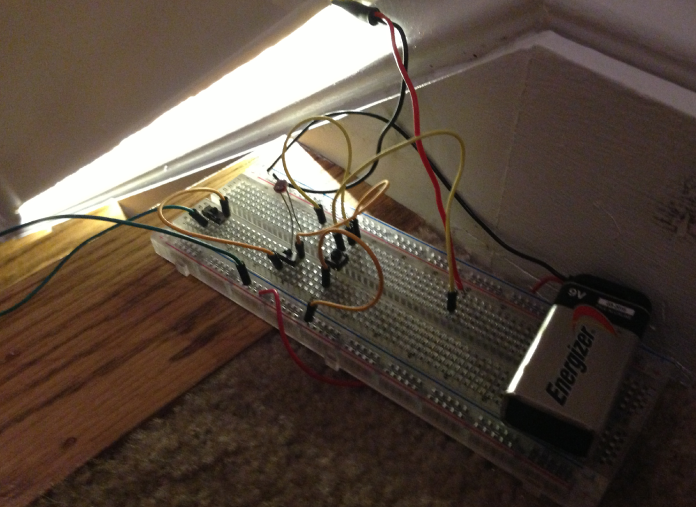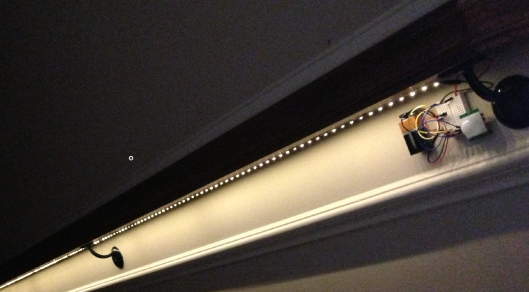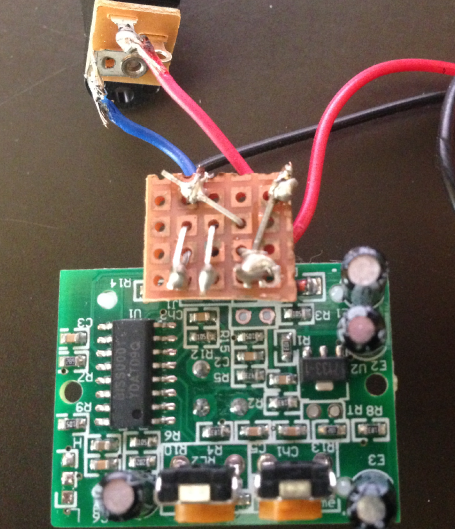It’s been a little while since we covered installing LED Light Strips on stairs for pathway lighting. This concept has evolved over time, starting with wiring the LED lights
down a plastic cable run
trimmed to direct the light down:

Early on, I realized that moving the lights higher (like under the banister) provided more even lighting, and on many stairs there’s rarely an outlet nearby. So the first-generation model I built was a battery-operated solution using a motion sensor
and transistor
wired with a mini development breadboard
:


Over time I ended up building all of these components into a custom-designed enclosure that I printed with my 3D Printer for a much more polished look:

The wiring is reasonably straight-forward. The Virtuabotix PIR Motion Sensor is very well-documented and has three terminals on it: one for the positive, one for the negative, and one for the “output” (that line “goes high” when motion is sensed). It has great voltage tolerance and some sensitivity/duration knobs to fine-tune its behavior.
For the finished circuit, input power comes from the 9V battery leads, and output power goes through a headphone jack
(with the male end of the headphone wire connected to the lights).
The positive terminal of the battery is connected directly to both the motion sensor as well as the output to the lights. The negative terminal of the battery connects directly to the motion sensor and the emitter of the transistor. The base of the transistor is connected to the output (center pin) of the motion sensor, and the collector runs out to the negative terminal of the output to the lights.
Without getting too deep in the technical details of transistors, the purpose of this setup is to prevent power flowing from the battery to the lights, UNLESS the motion sensor detects motion. When motion is detected, the output of the motion sensor “goes high”, which applies voltage to the base of the transistor. The result is that power is allowed to flow through the circuit and power the lights.




